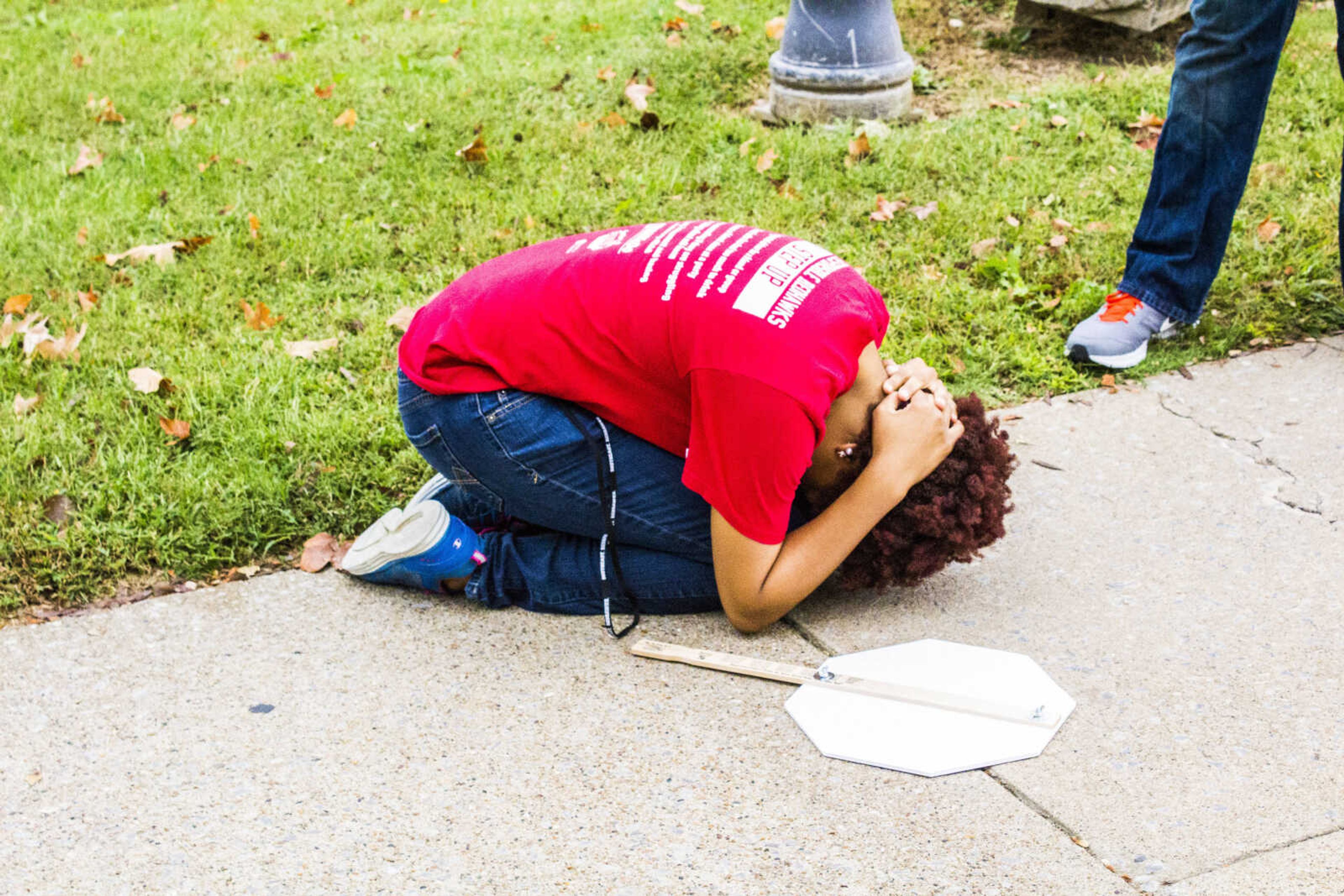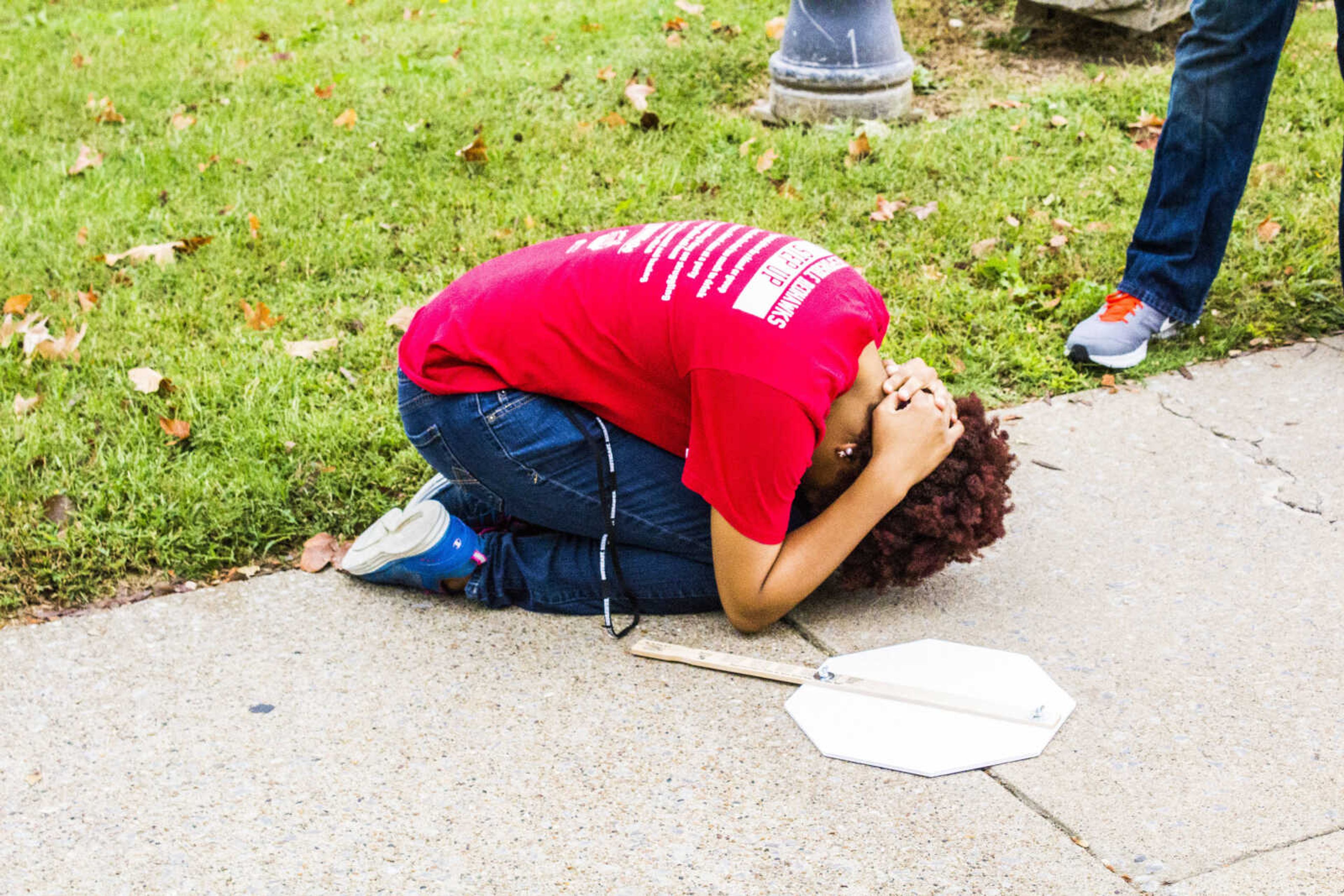On Oct. 19 Southeast Missouri State University participated in a region-wide earthquake drill called the Great Central ShakeOut. The university has participated in the drill before, but not since 2006 as part of an initiative by Southeast’s Student Government Association.
At 10:20 a.m. students and faculty were encouraged to observe the proper action to take during a strong earthquake. Beth Glaus, interim director of the Department of Public Safety, said the university became involved with the ShakeOut as part of Ready Campus, a project supported by the Federal Emergency Management Agency (FEMA).
The ShakeOut is sponsored twice a year to promote earthquake awareness. Glaus said that while it may not always take the form of the ShakeOut, the Department of Public Safety tries to maintain an awareness of earthquake risks.

“Though we don't participate in the ShakeOut all the time, February is also Earthquake Awareness Month,” Glaus said. “And we send preparedness tips out in February reminding people here that we ... are on a major seismic zone, or fault, and it is the historic site of three of the greatest earthquakes experienced in the United States.”
The focus of the ShakeOut is to inform individuals about the importance of correctly reacting to an earthquake when one strikes. The three initial steps to follow when one feels an earthquake is to drop to the ground, take cover under something sturdy and to hold on. While these steps may seem familiar, ShakeOut also emphasizes the importance of forming an individual, institutional or family plan for what to do after an earthquake.
In addition to students and faculty in classrooms practicing Drop, Cover and Hold On, the university shuttle service also practiced what to do while driving when an earthquake strikes.
“You get to the curb, trying to be cognizant of what's above you, put it in park, apply the emergency brake and wait for the shaking to stop,” Glaus said. “Then make sure that you don't drive into debris, and be cognizant of debris that may be hanging above you, particularly power lines.”
Glaus also said students and faculty should be aware of the type of seismic zone Southeast is situated upon and how it differs from other more earthquake-prone areas.
“The thing about the New Madrid Seismic Zone is it doesn't shake enough that we feel it,” Glaus said. “It shakes. A lot.”
According to the Missouri Department of Natural Resources’ (MDNR) website, the New Madrid Seismic Zone (NMSZ) is “the most active seismic area in the United States east of the Rocky Mountains.”
The NMSZ forms “a four-segment, zig-zag fault system with a total length of about 125 miles stretching from Marked Tree, Arkansas, northeastward through Missouri, Tennessee and Kentucky to Cairo, Illinois.”
Various institutions and agencies operate more than 30 seismograph stations dedicated to monitoring the NMSZ. Most of what they observe are called “microseismic” earthquakes, or earthquakes measuring less than 2.0 on the Richter scale. On average, 200 of these microseismic quakes occur every year on the NMSZ, or one every other day.
The MDNR estimates that our area is 30 years overdue for an earthquake of magnitude 6.3 or greater, which hasn’t occurred in the zone since Oct. 31, 1895.
Glaus said in the case of a severe earthquake, individuals must not only be mindful of what to do while the earthquake is happening, but also of what they will do in the days and weeks that follow.
“You think about the number of people who never prepare a meal,” Glaus said. “Think about the number of people who never carry cash. Think about preparing yourself for something like that, because in an earthquake that may last for days and weeks. Your card's not going to work, you can't get to your cash, restaraunts are not going to be able to prepare food.”
Glaus said earthquakes differ from other natural disasters in distinct ways. Severe weather can be foreseen, but earthquakes, especially in the NMSZ, are difficult to predict.
“And then remember that earthquakes, particularly, somehow we can't predict them,” Glaus said. “We don't know when they're going to happen. That's why it's important to know what to do when the shaking starts, and then to have a plan for after.”
For more information about the New Madrid Seismic Zone, visit the Missouri Department of Natural Resources’ webpage at dnr.mo.gov.





